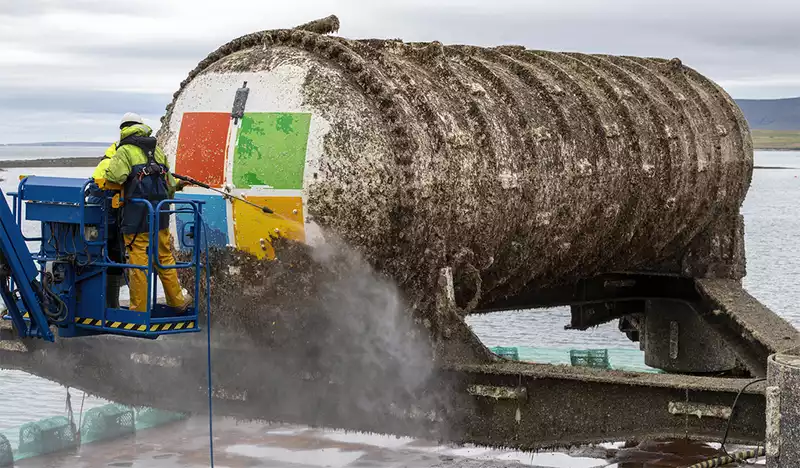For the past two years, Microsoft has been operating an undersea data center sunk 117 feet below the sea floor around the Orkney Islands in Scotland. Earlier this summer, Microsoft raised the data center, cleaned up the undersea scum, and declared the project a huge success. After all, undersea data centers are far more reliable than their land-based counterparts.
At least, that has been the case during the last two years of trials. The concept was first proposed to Microsoft during Think Week in 2014, an event where employees gather to share and propose new ideas, no matter how wild or seemingly crazy. Then in 2015, Microsoft's Project Natick team proved that an undersea data center was probably not totally ridiculous, but feasible, by deploying a data center under the sea for more than three months.
This moment served as proof of concept, and Microsoft embarked on a larger-scale test. Microsoft commissioned Naval Group and its subsidiary Naval Energies to build a data center that would go out to sea in 2018, named Northern Isles.
The obvious advantage of submerging the data center in the ocean is natural cooling. Data centers run at very high temperatures, and keeping them cool is difficult and expensive. The ocean is like the ultimate liquid cooler (the heat exchange piping in this data center is similar to that found in submarines), but that is not the only advantage.
Before submerging the data center, Microsoft filled the 40-foot pods with dry nitrogen. Microsoft assumed this would be an advantage over a land-based data center. Being underwater would also prevent engineers from bumping into cables and components as they serviced the racks and causing them to fail.
It turns out that Microsoft was on to something.
"The failure rate underwater is one-eighth of what it is on land," says Ben Cutler, who heads Project Natick. 'I have an economic model that says if we lose this many servers per unit of time, we are at least on par with on land. We are considerably better than that."
[14There are other advantages. This approach can provide coastal residents with much faster access to cloud services, including video, gaming, and regular web surfing. In addition, the Orkney Islands' power grid is fully supplied by wind, solar, and experimental green energy technologies.
What about service in the event of a rack failure? The failure rate is so low compared to onshore data centers that Microsoft's idea is simply to replace all servers every five years without bothering with ongoing maintenance, and to turn off any servers that might go bad in the meantime.
Single pod testing is one thing. Having proven that the concept has merit, Microsoft's next task is to expand the capabilities of its data centers.
"Early conversations about the future potential of Project Natick centered on how to expand the underwater data center to power Microsoft Azure's suite of cloud services.


Comments